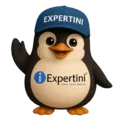- Expertini Resume Scoring: Our Semantic Matching Algorithm evaluates your CV/Résumé before you apply for this job role: Internship: Deep Neural Networks for the design of nanophotonic devices.

Urgent! Internship: Deep Neural Networks for the design of nanophotonic devices - Local Job Opening in Biot
Internship: Deep Neural Networks for the design of nanophotonic devices
Job description
Contexte et atouts du poste
Nanophotonics is the science that studies the interactions between light and matter at the nanoscale.
Light is an electromagnetic wave whose wavelength is in the visible spectrum, i.e., between approximately 400 nm to 800 nm.
In this context, one refers to as sub-wavelength structuring of matter.
The structuring of matter at these scales allows these interactions to be shaped for a variety of technological and societal applications.
Numerical modeling is extensively used for understanding the physical phenomena underlying light-matter interactions, but also for tailoring or harnessing these interactions guided by specific performance objectives.
The first objective requires to numerically solve the system of time-domain or frequency-domain Maxwell equations coupled to differential equations modeling the behavior of propagation media at optical frequencies while the seond goal is addressed by leveraghing a numerical optimization algorithm in the framework of an inverse design workflow.
For both objectives, the Atlantis team from the Inria Center at Université Côte d'Azur is developing the DIOGENeS [ software suite, which is dedicated to the numerical study of multiscale problems relevant tonanophotonics and nanoplasmonics.
DIOGENeS implements several Discontinuous Galerkin (DG) type methods for which the team has developed a long-term expertise [1-3].
It also includes a includes an inverse design component, which relies on statistical learning-based global optimization methods for single-objectove, multi-objevctive and robust optimization [4-6].
Beside the above-mentioned high-fidelity DG-based electromagnetic solvers, since 2022 the team is also actively studying alternative modeling and design approaches leveraging Deep Neural Networks (DNNs) [7].
[1] J.
Viquerat.
Simulation of electromagnetic waves propagation in nano-optics with a high-order discontinuous Galerkin time-domain method.
Ph.D. thesis, University of Nice-Sophia Antipolis, Dec 2015.
[2] S.
Lanteri, C.
Scheid and J.
Viquerat.
Analysis of a generalized dispersive model coupled to a DGTD method with application to nanophotonics.
SIAM J.
Sci.
Comp., Vol.
39, No. 3, pp.
A831–A859
[3] E.
Agullo, L.
Giraud, A.
Gobé, M.
Kuhn, S.
Lanteri and L.
Moya.
High order HDG method and domain decomposition solvers for frequency‐domain electromagnetics.
Int.
J.
Numer.
Model.
Electr.
Netw.
Dev.
Fields, Vol.
33, No. 2
[4] M.M.R. Elsawy, S.
Lanteri, R.
Duvigneau, G.
Brière, M.S. Mohamed and P.
Genevet.
Global optimization of metasurface designs using statistical learning methods.
Scientific Reports, Vol.
9, No. 17918
[5] M.M.R. Elsawy, A.
Gourdin, M.
Binois, R.
Duvigneau, D.
Felbacq, S.
Khadir, P.
Genevet and S.
Lanteri.
Multiobjective statistical learning optimization of RGB metalens.
ACS Photonics, Vol.
8, No. 8, pp.
2498–2508
[6] M.M.R. Elsawy, M.
Binois, R.
Duvigneau, S.
Lanteri and P.
Genevet.
Optimization of metasurfaces under geometrical uncertainty using statistical learning.
Optics Express, Vol.
29, pp.
29887-29898
[7] A.
Clini de Souza, S.
Lanteri, H.E. Hernandez-Figueroa, M.
Abbarchi, D.
Grosso, B.
Kerzabi and M.
Elsawy.
Back-propagation optimization and multi-valued artificial neural networks for highly vivid structural color filter metasurfaces.
Scientific Reports, Vol.
13, No. 1, pp.
21352
Mission confiée
This internship project is expected to be a first step toward a PhD project that will be concerned with the development of novel DNN-based approaches for the design of complex nanophotonic devices such as metasurfaces.
The objective of the internship will be to propose, develop and assess different building block approaches relying on DNNs for designing a nanophotonic device.
For this, the following steps will be considered: Review of state-of-the art approaches in the bibliography on AI-based modeling for nanophotonics; Formulation and coding of a few selected approaches; Critical assessment and proposition of research directions for methods beyond the state-of-the art and taking into account the modeling challenges of complex nanophotonic devices; Synthesis end publication of results.
Compétences
Technical skills and level required :
Software development skills : Python and PyTorch
Relational skills : team worker (verbal communication, active listening, motivation and commitment)
Other valued appreciated : good level of spoken and written english
Your Complete Job Search Toolkit
✨ Smart • Intelligent • Private • Secure
Productivity & Wellbeing (Private)
Organize and maintain wellnessSalary and Tax Calculator
Financial planning toolsInterview Preparation (Private)
Master your interviewsInterview Practice
Practice for Any Interview Q&A (AI Enabled)
Interview Prediction
Predict interview Q&A (AI Supported)
Interview Practice Timer
Mock interview trainer (AI Supported)
Behavioral Mastery
Ace behavioral interviews (AI Powered)
Question Journal
Record interview questions (Confidential)
Interview Ace
Master your interviews
Q&A Logs
Track your answers (Confidential)
Application Tools (Private)
Optimize your applicationsApplication Planner
Schedule your applications (Confidential)
Cover Letter Tool
Create perfect cover letters (AI Supported)
Resume Score
Analyze your resume (NLP Supported)
ATS Score
ATS compatibility check (AI Supported)
Application Analyzer
Optimize your applications (AI Supported)
Career Planning & Analysis (Private)
Plan your career pathCV & Resume Builder Templates (Private)
Professional resume templatesProfessional
O*NET Supported
Executive
O*NET Supported
Modern
O*NET Supported
Creative
O*NET Supported
Minimalist
O*NET Supported
Europass
European Union Recommended
Student
Institution Recommended
Graduate
Institution Recommended
Academic
Researcher Recommended
Developer/IT
IT Savvy Recommended
Skilled Worker
Trades Recommended
Monochrome
O*NET Supported
Art
Artist Recommended
Harvard
Researchers Recommended
Community Research
Join and contributeProfile & Core Tools
Build your professional presenceRegister
Create your account
Login
Access your account
Profile Builder
Create your professional profile
View Profile
Preview your profile
Bookmarked Jobs
Your saved opportunities
Your Reviews
Reviews you've given
Following
Companies you follow
Find Companies
Discover employers
Standalone CV Builder
O*NET Supported
Other Utilities (Private)
Additional helpful toolsResources & FAQ
Get help and guidanceGeneral FAQ
Common questions answered
Job Seekers FAQ
Help for job seekers
Job Matching
How matching works
Personalized Matching
Customized job suggestions
Quick Apply
Fast application process
Alert Frequency
Manage alert settings
Job Alerts Guide
Understanding alerts
Resume Matching
How we match resumes
Ethical Branding
Professional branding guide
Candidate Visibility
Increase your visibility
Verified Badge
Get verified status
AI ATS Technology
Learn about our AI
ATS Ranking
How ATS ranks you
Semantic Matching
AI-powered matching
Join thousands of professionals who've advanced their careers with our platform
Please Note: This is NOT a job application form.
-
Real-time Internship Deep Jobs Trends in Biot, France (Graphical Representation)
Explore profound insights with Expertini's real-time, in-depth analysis, showcased through the graph below. This graph displays the job market trends for Internship Deep in Biot, France using a bar chart to represent the number of jobs available and a trend line to illustrate the trend over time. Specifically, the graph shows 703 jobs in France and 1 jobs in Biot. This comprehensive analysis highlights market share and opportunities for professionals in Internship Deep roles. These dynamic trends provide a better understanding of the job market landscape in these regions.
-
Are You Looking for Internship: Deep Neural Networks for the design of nanophotonic devices Job?
Great news! INRIA is currently hiring and seeking a Internship: Deep Neural Networks for the design of nanophotonic devices to join their team. Feel free to download the job details.
Wait no longer! Are you also interested in exploring similar jobs? Search now: Internship: Deep Neural Networks for the design of nanophotonic devices Jobs Biot.
-
The Work Culture
An organization's rules and standards set how people should be treated in the office and how different situations should be handled. The work culture at INRIA adheres to the cultural norms as outlined by Expertini.
The fundamental ethical values are:- 1. Independence
- 2. Loyalty
- 3. Impartiality
- 4. Integrity
- 5. Accountability
- 6. Respect for human rights
- 7. Obeying France laws and regulations
-
What Is the Average Salary Range for Internship: Deep Neural Networks for the design of nanophotonic devices Positions?
The average salary range for a Internship: Deep Neural Networks for the design of nanophotonic devices Jobs France varies, but the pay scale is rated "Standard" in Biot. Salary levels may vary depending on your industry, experience, and skills. It's essential to research and negotiate effectively. We advise reading the full job specification before proceeding with the application to understand the salary package.
-
What Are the Key Qualifications for Internship: Deep Neural Networks for the design of nanophotonic devices?
Key qualifications for Internship: Deep Neural Networks for the design of nanophotonic devices typically include Computer Occupations and a list of qualifications and expertise as mentioned in the job specification. Be sure to check the specific job listing for detailed requirements and qualifications.
-
How Can I Improve My Chances of Getting Hired for Internship: Deep Neural Networks for the design of nanophotonic devices?
To improve your chances of getting hired for Internship: Deep Neural Networks for the design of nanophotonic devices, consider enhancing your skills. Check your CV/Résumé Score with our free Resume Scoring Tool. We have an in-built Resume Scoring tool that gives you the matching score for each job based on your CV/Résumé once it is uploaded. This can help you align your CV/Résumé according to the job requirements and enhance your skills if needed.
-
Interview Tips for Internship: Deep Neural Networks for the design of nanophotonic devices Job Success

Here are some tips to help you prepare for and ace your job interview:
Before the Interview:
- Research: Learn about the INRIA's mission, values, products, and the specific job requirements and get further information about Other Openings
- Practice: Prepare answers to common interview questions and rehearse using the STAR method (Situation, Task, Action, Result) to showcase your skills and experiences.
- Dress Professionally: Choose attire appropriate for the company culture.
- Prepare Questions: Show your interest by having thoughtful questions for the interviewer.
- Plan Your Commute: Allow ample time to arrive on time and avoid feeling rushed.
- Be Punctual: Arrive on time to demonstrate professionalism and respect.
- Make a Great First Impression: Greet the interviewer with a handshake, smile, and eye contact.
- Confidence and Enthusiasm: Project a positive attitude and show your genuine interest in the opportunity.
- Answer Thoughtfully: Listen carefully, take a moment to formulate clear and concise responses. Highlight relevant skills and experiences using the STAR method.
- Ask Prepared Questions: Demonstrate curiosity and engagement with the role and company.
- Follow Up: Send a thank-you email to the interviewer within 24 hours.
- Be Yourself: Let your personality shine through while maintaining professionalism.
- Be Honest: Don't exaggerate your skills or experience.
- Be Positive: Focus on your strengths and accomplishments.
- Body Language: Maintain good posture, avoid fidgeting, and make eye contact.
- Turn Off Phone: Avoid distractions during the interview.
To prepare for your Internship: Deep Neural Networks for the design of nanophotonic devices interview at INRIA, research the company, understand the job requirements, and practice common interview questions.
Highlight your leadership skills, achievements, and strategic thinking abilities. Be prepared to discuss your experience with HR, including your approach to meeting targets as a team player. Additionally, review the INRIA's products or services and be prepared to discuss how you can contribute to their success.
By following these tips, you can increase your chances of making a positive impression and landing the job!
-
How to Set Up Job Alerts for Internship: Deep Neural Networks for the design of nanophotonic devices Positions
Setting up job alerts for Internship: Deep Neural Networks for the design of nanophotonic devices is easy with Biot Jobs | Expertini. Simply visit our job alerts page here, enter your preferred job title and location, and choose how often you want to receive notifications. You'll get the latest job openings sent directly to your email for FREE!
Unlock Your Internship Deep Potential: Insight & Career Growth Guide

